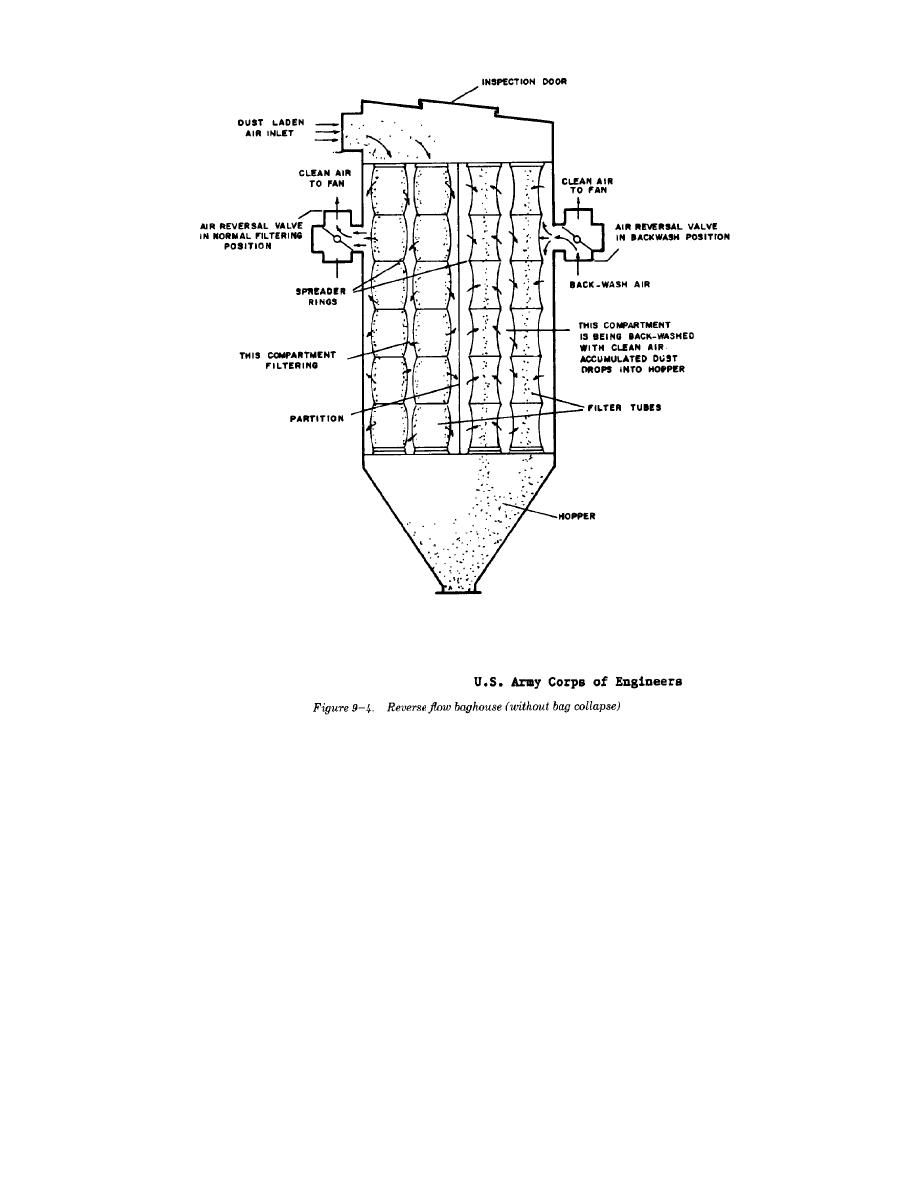
TM 5-815-1/AFR 19-6
than other nylons and many other fibers.
these reasons, Teflon would be an economical
Because of Nomen's high abrasion resistance,
choice only in an application where extreme
it is used in filtration of abrasive dusts or wet
conditions will shorten the service life of
abrasive solids and its good elasticity makes
other filter fibers. It should be noted that the
it ideal for applications where continuous
toxic gases produced by the decomposition of
flexing takes place. All nylon fabrics provide
Teflon at high temperatures can pose a health
good cake discharge for work with sticky
hazard to personnel and they must be
dusts.
removed from the work area through
(3) Teflon is the most chemically resistant fiber
ventilation.
c. Yarn type. Performance characteristics of filter
produced. The only substances known to
react with this fiber are molten alkali metals,
cloth depend not only on fiber material, but also on the
fluorine gas at high temperature and pressure,
way the fibers are put together in forming the yarn.
and carbon trifluoride. Teflon fibers have a
Yarns are generally classified as staple (spun) or fila-
very low coefficient of friction which
ment.
produces excellent cake discharge properties.
(1) Filament yarns show better release charac-
This fact, coupled with its chemical inertness
teristics for certain dusts and fumes,
and resistance to dry and moist heat
especially with less vigorous cleaning
degradation, make Teflon suitable for
methods.
filtration and dust collection under severe
(2) Staple yarn generally produces a fabric of
conditions. Its major disadvantages are its
greater thickness and weight with high per-
poor abrasion resistance and high price. For
meability to air flow. Certain fumes or dusts
9-6


 Previous Page
Previous Page
